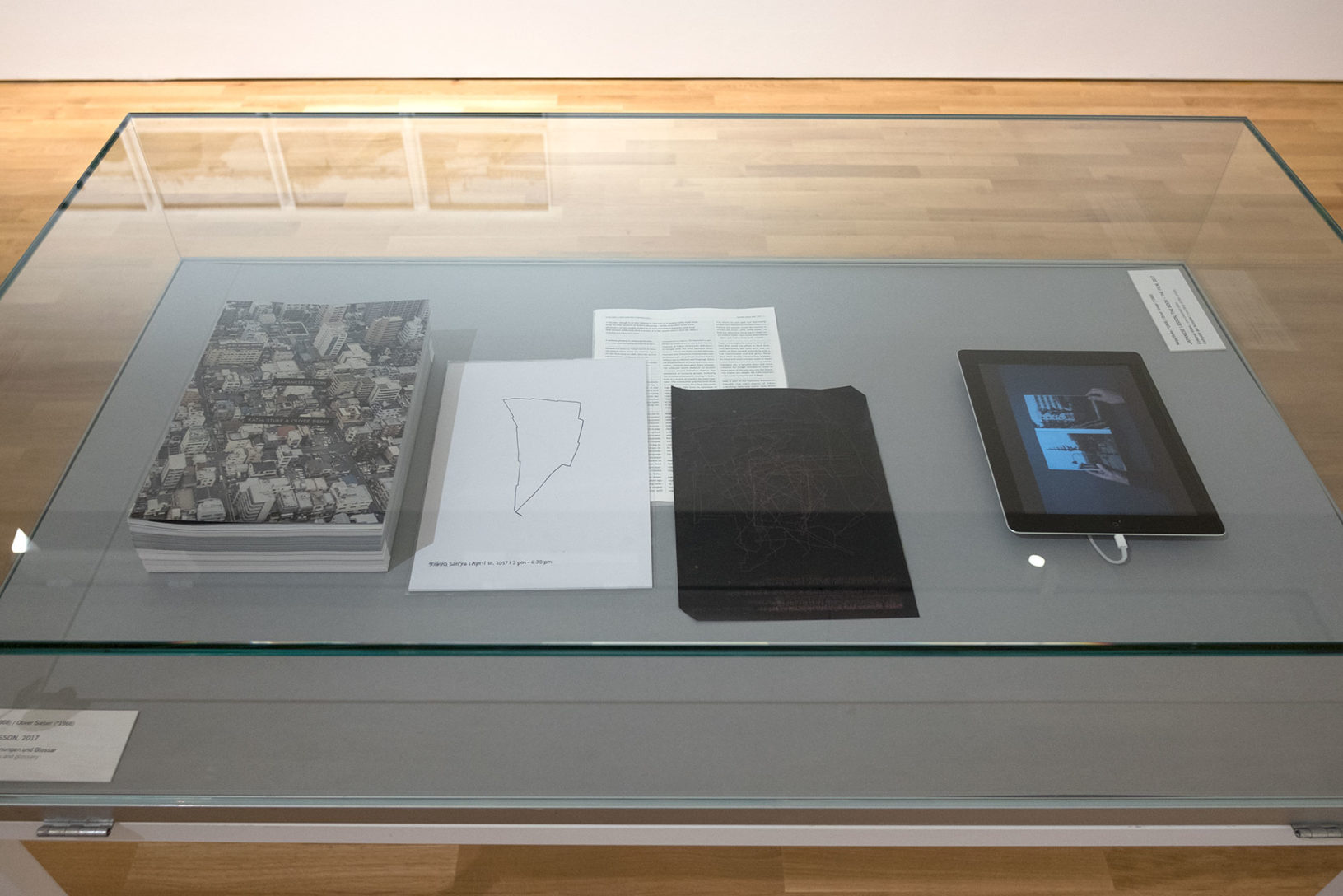Katja Stuke & Oliver Sieber, artists
Fax from the Library ; Japanese Lesson ; You and Me: three projects, consisting of several parts incl. books, videos, exhibitions, websites, glossaries etc.
Fax from the Library (since 2013)
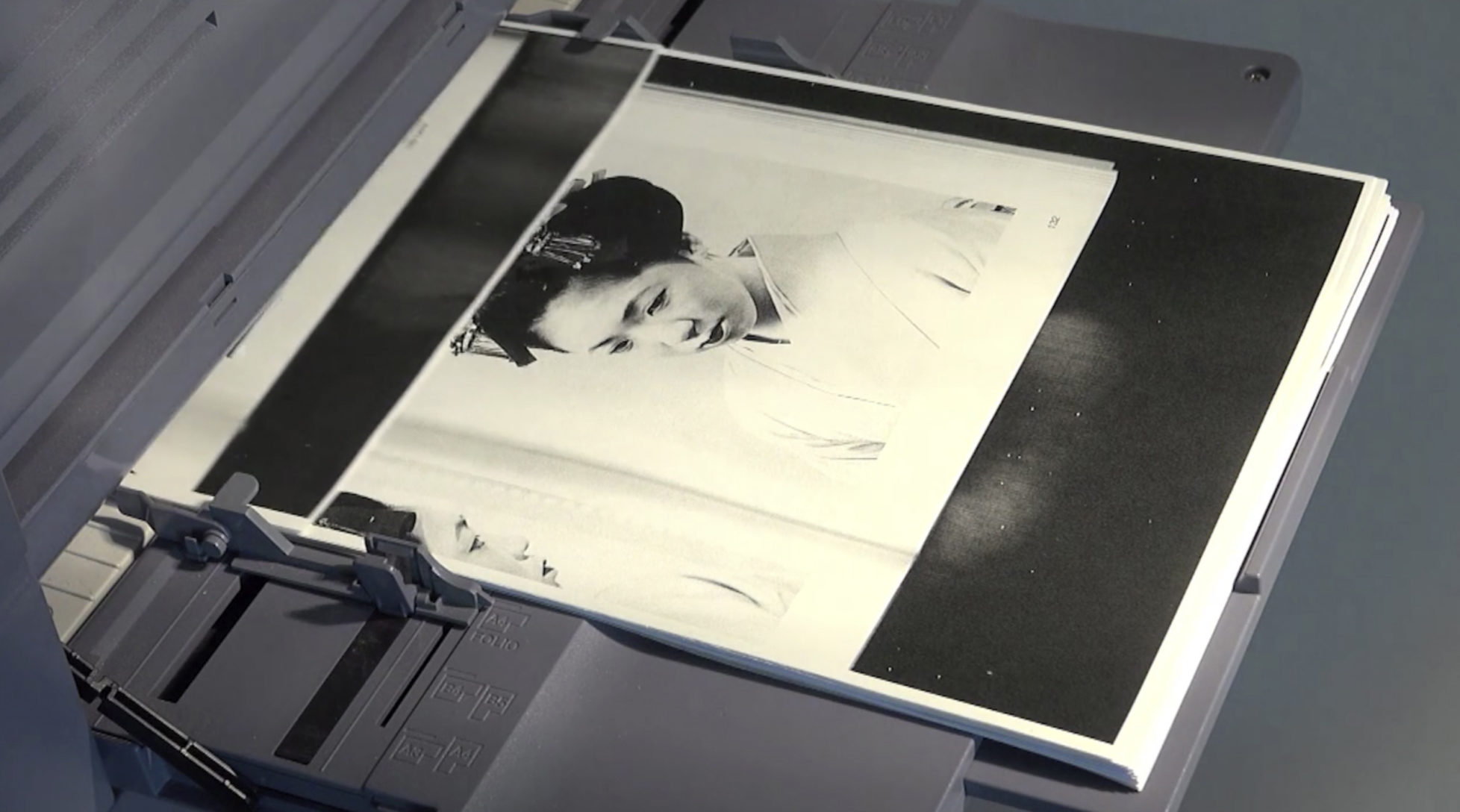
Fax from the Library, two one-channel-videos, 2015 each 6:37 min; 16:9; full HD 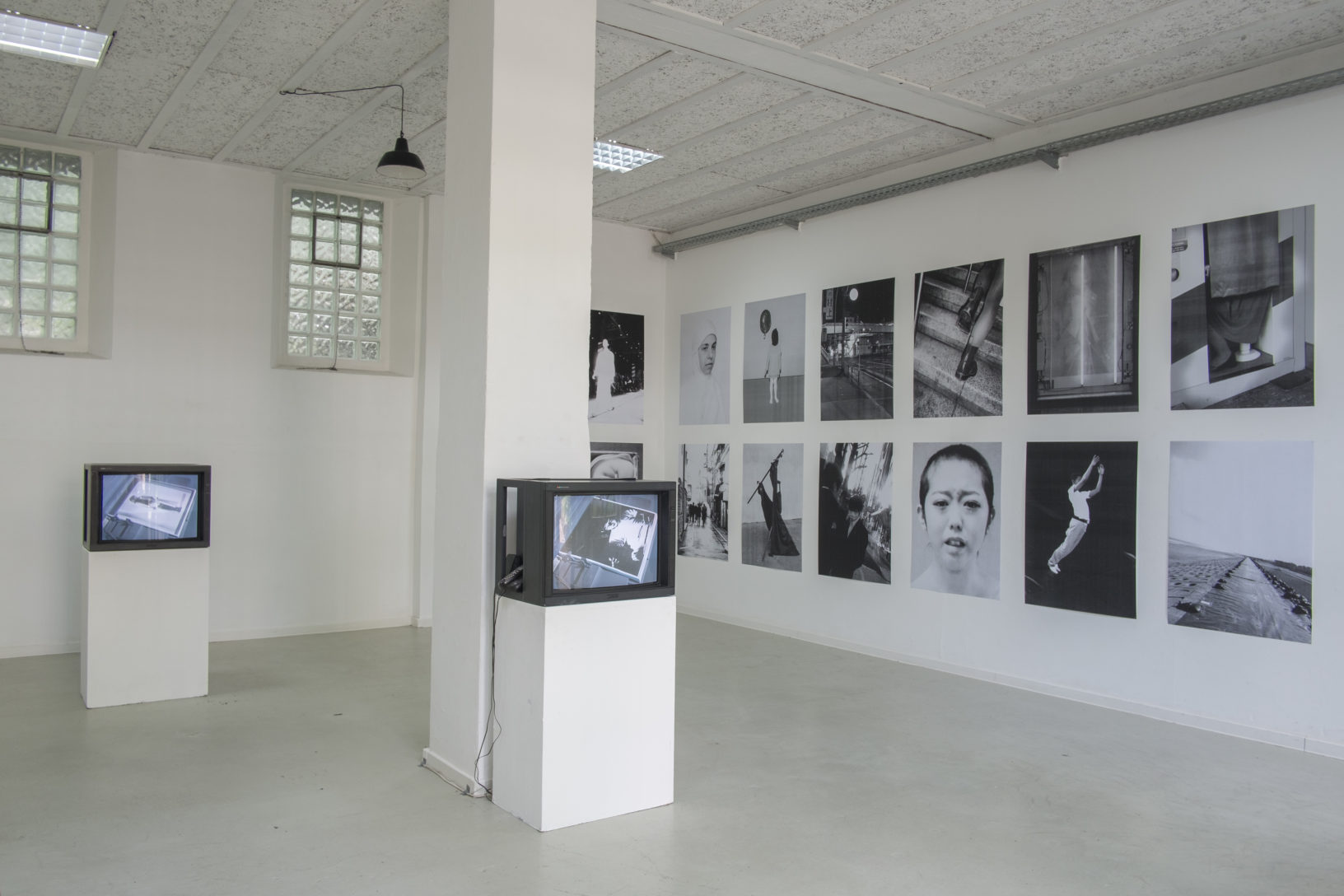
Frax from the Library, Projektraum Fotografie Dortmund, 2015
https://faxfromthelibrary.tumblr.com/
Time and Sequence is something we are very interested in when thinking about photography and images. Moving images frequently appear in our photographic practice – sometimes as a source for images in Katja’s CCTV-series, sometimes as the topic for a series like O.i.F./Movie Locations, sometimes as a projection of found footage in projects like Japanese Lesson or, again, O.i.F./Movie Locations sometimes as juxtaposed projections for 無所有, Nothing to my Name (bringing together Imaginary Club and National-Feiertag) which also included sound.
Fax from the Library, a recent project, started as a tumblr blog. A blog about roles, models, idols, admiration and a copy machine – and the best way to get to know your books. To figure out the complex structure of our photobook library we copied one page at a time from other artists’ photobooks and ‘faxed them into the internet’. We followed the question ‘Do you never feel the need to be another?’, selecting mainly portraits and found interest in images sometimes different from the interest we had when we bought the books.
At first we published a zine in a small edition including some of these copies. Later we decided that the sequence in the blog was something quite crucial for the whole project so we chose to create a video which allows to determine time and sequence – so we could control the way people see, follow our associations and understand our implications. In two 6 min. videos we use 99 copied images disappearing into or appearing from a fax-machine. For one second only you can see the whole image, then it disappears and a new one follows. This and the rhythm of the sound of the machine have a compelling influence in how you look at images, how you connect different images and how you understand images; the video and the sound visualize the process of ‘faxing’ and adds a new way of perception. The publications can be touched and read by the audience as long as they want and in the direction they want. The huge black and white copies of our own photography and the way we present them emphasizes the idea of an installation. Each piece includes different images, each element presents photographs in a different way, adds a new approach to
photography. (In Photobookreview, Aperture Foundation, Summer 2017)
Japanese Lesson (2017)
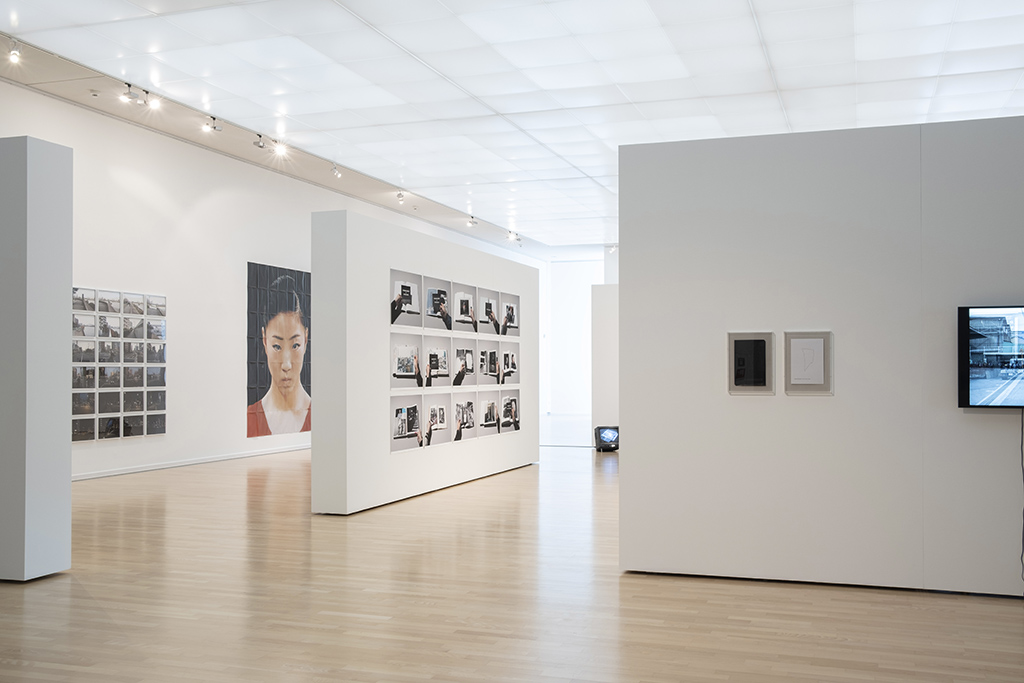
Japanese Lesson, Kunsthalle Gießen, 2019, photo: R. K. Wegs 
Japanese Lesson, Museum für Angewandt Kunst Hamburg, 2018/2019
http://japaneselesson.boehmkobayashi.de/
Since 2005 Katja Stuke and Oliver Sieber have been traveling to Japan, working on topics from subculture to surveillance. Since 2011 they are developing an extensive body of work they call the Japanese Lesson. At the beginning it was a single one-channel video, dealing with the visual influence, research and overwealming impressions of the Japanese cities, life and culture. Since then their perspective became more elaborated and several new works have been created: photobooks, different photographic series, dealing with topics like protest and activism, activists and landscape — political landscape.
This Japanese Lesson is an associative mashup. It contains images and drawing from mangas and animes, still images from japanese movies, historical and current press photographs; photos, drawings and paintings by japanese artists, some of our own works and material we found in the web, magazines, LP-record-sleeves, catalogues, on the streets on in the subways of Tokyo and Osaka. It was shown e.g. in the exhibition
Our House at the Museum für Photographie, Braunschweig 2011.
The video Japanese Lesson started in 2009 as a zine and projection – an associative mash-up containing material interesting for a ‘search for Japan’. Ever since the projection is growing, and Japanese Lesson is developping — including works about music- and subculture, discrimination/activism/politics/borders, urbanism/city developpement or Olympia 2020. Japanese Lesson also brings together individual works by Katja Stuke and Oliver Sieber regarding music and subculture and other works they produced since their first artist residency in Osaka in 2006. This additional website is a glossary; a research-archive including works by Japanese artists, international artists who work in Japan, videos, documentaries, images, photographs and much more.
I can also—though in no way claiming to represent or to analyze reality itself (these being the major gestures of Western discourse)— isolate somewhere in the world (faraway) a certain number of features (a term employed in linguistic), and out of these features deliberately form a system. It is this system which I shall call: Japan. (Roland Barthes, Empire of the Signs)
Japanese Lesson and publications
In the last years (since Fukushima) we met artists and activist, became friends — and through them we understood more and more about Japanese society and history, we joined rallies and protests . (Tokyo No hate, 68 pages, 19 x 27 cm, black and white Xerox print (B).
For the extensive new book Japanese Lesson (A), we took photographs while walking on the borders of certain neighborhoods in Osaka and Tokyo which still have to deal with prejudices and discrimination because of several (historic and present) reasons. While walking around these areas we where thinking and discussing topics like ‘political landscapes’, ‘borders’, how a neighborhood can define your identity, who owns the
‘cities’… and more. We also walked around parts of Tokyo which are currently changing for the future, mainly because of the 2020 Olympic Games. In the book the topics of changing cities in the past and in the future are brought together. On each of all our walks we took images around on a regular basis – depending on time or distance. The black pages in this book include the missing images from other missing districs – put on top of each other until they became quite black. There is a third small publication A Colour Guide (C ) showing details of architecture and nature. We where wondering if there are similarities between the colors in old parts (‚deep Japan’) of japanese cities and the 63 colors of Le Corbusier.
Books have always been an important part of our artistic practice – in our independent as well as the collaborative projects. The process of developing a project often gets clear when looking at the dummies. In some cases you already know how the book will look like while shooting the images. In that case you rather need a dummy but you might need to work hard on the concept of an exhibition. In other cases you are very sure about the whole concept of a book but you need to try several different forms of the book, develop the editing of the images, change decisions about size, paper or book-binding. We often start projects with a zine in a smaller edition of 105 copies. There we juxtapose images, develop the topics and very often understand the zine as a part of a larger concept which could include a web-based project, an exhibition or a video. We exhibited various forms of Japanese Lesson several times before, always changing, including for the most part a very fast projection of our own photographs we took in Japan over the last 11 years alternating with found footage like maps, historic photos or paintings, pop-culture-images, drawings, mangas or animes giving an insight into our growing and developing personal knowledge about Japan. The presentations also included framed photos of protestors and activists in recent history, different zines, edited by the audience, collections of toys, books by other artists from our own photobook library – every time a different selection or compilation.
You and Me (2015)
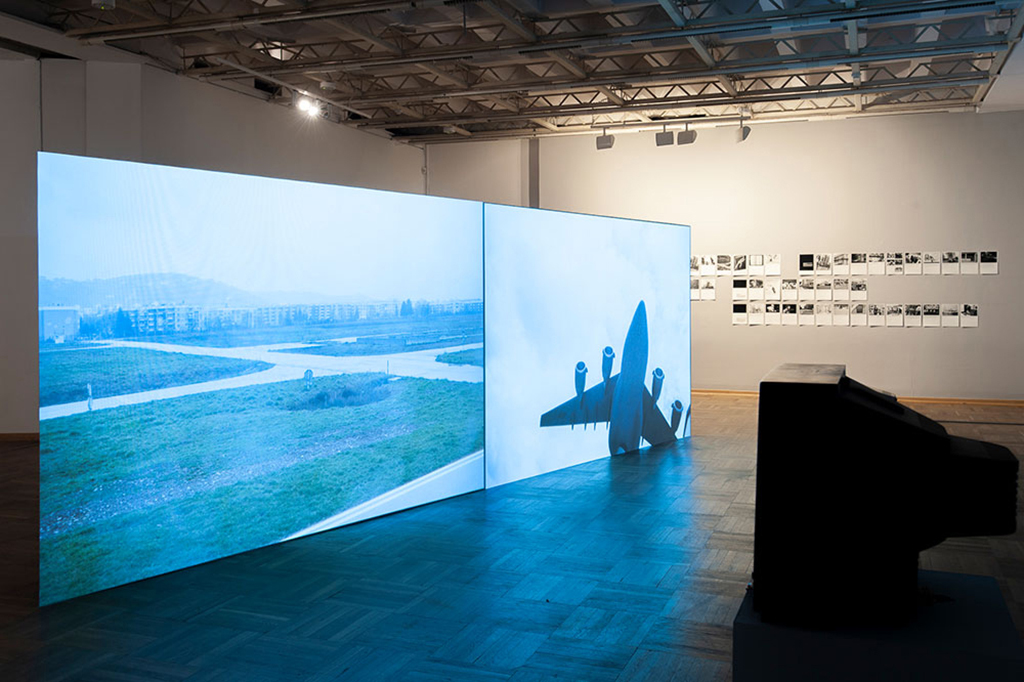
You and Me, Bunkier Sztuki, Krakow Photomonth, 2018 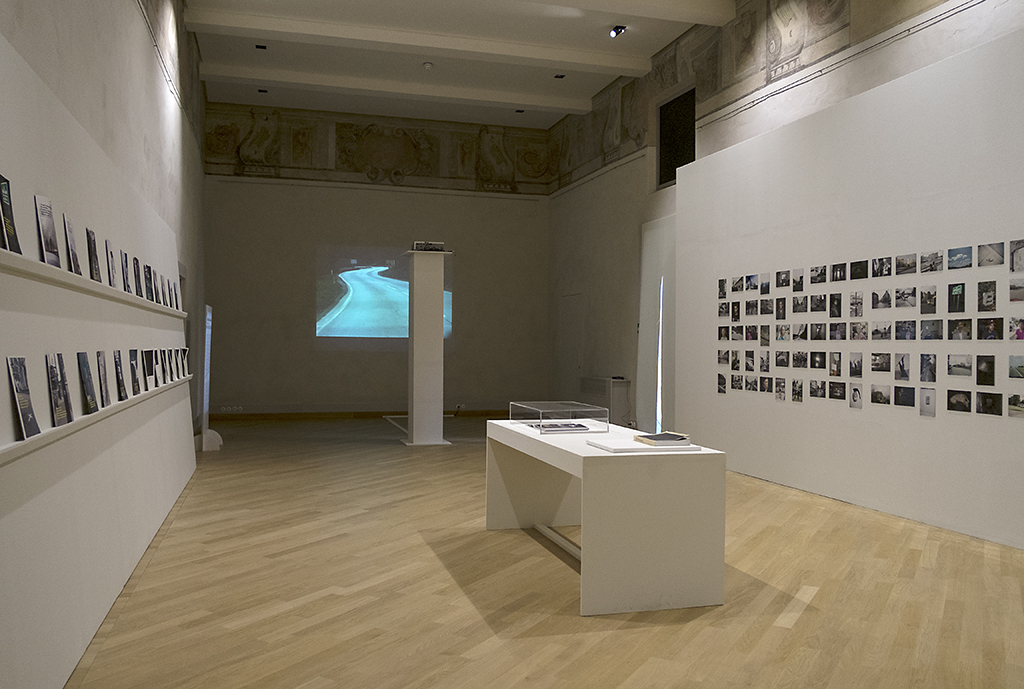
You and Me, Palazzo da Mosto, Reggio Emilia, Fotografia Europea, 2018
http://youandme.boehmkobayashi.de/
You and Me follows the story of a Bosnian-born refugee who lived in Dusseldorf in the 1990s before moving to the US.
The photobook sets up links between Bosnia, Germany, and the US, while also providing a contextual frame for the artists and their relationship to the past. “We didn’t just want to tell a historical story; instead we set out to shift the perspective between the present and the future and generate connections between the three countries using visual material relating to the military, politics, music, and film.” The book includes more than two hundred images organized in twenty-two chapters reflecting the different aspects of the series, as well as five other chapters including research material, background information, some short stories, and a text by Aleksandar Hemon. You and Me won the LUMA Foundation’s Dummy Book Award at the 2016 Les Rencontres de la Photographie Festival in Arles. The project came into being with support from the MoCP Chicago, the Goethe-Institut in Chicago, the Goethe-Institut Sarajevo, Les Rencontres de la Photographie and the LUMA Foundation in Arles.
On which fields of knowledge are you focused?
Photography, photobooks, inter-media image making.
What is the object of your research?
Photography, image culture.
Could you identify some constants in your work?
In our collaborative project we focus on several aspects. In Japanese Lesson it’s about political and social landscape, in You and Me it’s about the relationship with the history, between different places and habits, and the use of different visual materials; and in Fax from the Library it’s about our library as a source and archive – a project about role models, idols, admiration and a copy machine – and a way to get to know our books.
How did you find out about Aby Warburg’as work?
Years ago we found out about the Bilderatlas while working in a bookstore…
How would you define an Atlas?
An Atlas can be a glossary, a research tool, a conceptual form, an aesthetic decision.
Atlas as a conceptual, formal and mnemonic device; do you use it in your work?
In Fax from the Library we use our library as a source for the project. The library is the Atlas. In Japanese Lesson we use found material to create a whole new artistic piece (the Mash-up video) or creat a digital glossary, to widen the context. In You and Me we juxtapose images and texts of different kind; research elements become part of the project/of the exhibitions.
For Japanese Lesson, Another Lesson or You and Me the Atlas could be several different ‘CONTAINERS’ where we put – at the beginning: unstructured – different material like images, books, movies, manga, news, historical images from different countries and cultures. And these ‘CONTAINERS’ could be diaries or travelogs, websites or videos.
Do you know about the existence of Mnemotechnics?
Not before we read the question…
Which mnemonic system guides the organization of your material?
As artists we use a very associative system to always re-contextualize our material. Also the dialogue between the two of us always re-contextuaizes and re-organizes images and material. It happens a lot, that material re-appears in different projects.
Are there visual and emotional formulas (pathosformeln) in your project?
We can’t tell…if so, in a very instictiv, emotional, associative way.
In your work, do you identify formal or conceptual recurrences such as repetitions and disruption, distance and proximity, identity and migration, conflict and colonization?
We think we do so; but as photographers and not so much writers we use the images to express these concepts without too many analythic text by ourselves 😉
In your work, what is the balance between image and text?
It depends. Often the title should be so strong, to lead to a specific reception of the images. In You and Me we juxtapose images and texts in a projection so the text should influence the perspective of the viewer towards the images. But mainly the image get’s the floor…
Thinking about Warburg’s ‘good neighborhood rule’, what are the books that underpin your project?
As Fax from the Library uses our whole library it’s hard to answer this question! Some out of many: Wolfgang Tillmans, If One Thing Matters, Everything Matters; Gerhard Richter, Atlas; Sophie Calle, Take Care of Yourself; Anthony Hernandez, Waiting, Sitting, Fishing, and Some Automobiles: LA. 2007; Mike Mandell / Larry Sultan, Evidence; Nobuyoshi Araki, Sentimental Journey; Lieko Shiga, Rasen Kaigan; Osamu Kanemura, Spider’s Strategy; Ryudai Takano, Kasubaba
Katja Stuke (*1968) and Oliver Sieber (*1966) live and work in Düsseldorf. They cover an extensive range of personas: photographers and artists, curators and exhibition organizers, designers and art book editors. Yet as they move through their photographic cosmos, it is not always so easy to determine where one identity ends and the other begins. Regardless, in their works and activities as artists and art facilitators they have long since become moderators of a very specific photographic culture. In 2017 they won the LUMA Rencontres Dummy Book Award at the Festival Rencontres d‘Arles. And in 2014 Oliver Sieber‘s Imaginary Club won the Book of the Year award at the Paris Photo – Aperture Foundation Photo Book Awards. Since 2005, they have worked and exhibited regularly abroad, including artist residencies in Osaka, Tokyo, Paris, Chongqing, Chicago, Rotterdam, Sarajevo and Toronto. They live and work in Düsseldorf, Germany
